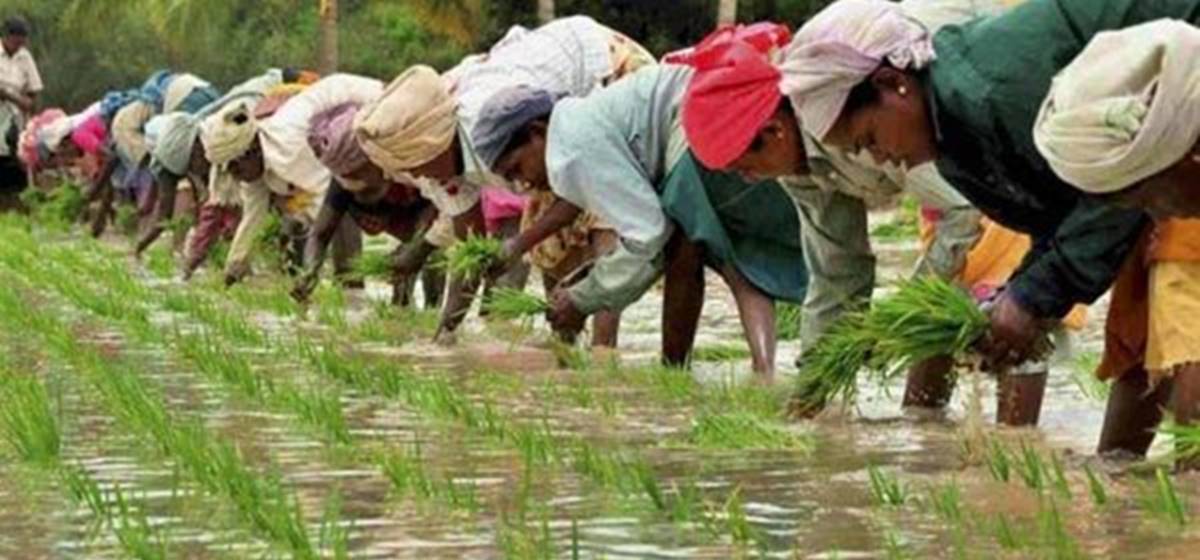The pandemic has pushed Punjab’s paddy producing farmers to embrace ‘Direct Seeding of Rice’ (DSR) technique like never before.
While bringing record 20 per cent of the total targeted rice area (27 lakh hectares) in the state under DSR, Punjab has increased its DSR area by 34 per cent compared to the cumulative area under the technique over the last decade — 2010 to 2019.
The increase in DSR sowing area this year translates into 30 per cent saving of the state’s ground water, and a saving about Rs 500 to 600 crore in input costs to Punjab’s farmers collectively.
Data sourced from the Punjab Agriculture department revealed that till July 6, 5,19,300 hectares (12.82 lakh acres) area has been sown through DSR technique in Punjab in this Kharif season, while from 2010 to 2019 only around 3,87,000 hectares (9.55 lakh acres) could be brought under DSR. This year’s area is more than 34 per cent higher as compared to the cumulative area of a decade.
2020 vs last 10 years
DSR was recommended in the state in 2010 and in the first two years — 2010 and 2011 — only a couple of 100 hectares in each year could be sown through this by progressive farmers and by the Department of Agriculture. Farmers started taking up this technique seriously in 2012 when for the first time 8,922 hectares area was brought under it. Then next three years were very good for the technique when 38,900 hectares, 1.15 lakh hectares, and 1.65 lakh hectares were brought under it in 2013, 2014, and 2015, respectively.
But then the popularity of DSR started decreasing among the farmers because proper technical know-how was not available to them. In the years 2016, 2017, 2018 and 2019 the area under DSR reduced to 19,660 hectares, 9,440 hectares, 6,200, and 23,300 hectares, respectively.
With this in the past one decade, only 3.87 lakh hectares could be brought under it while this year alone over 5.19 lakh hectares have been dedicated under DSR till July 6, which is 1.32 lakh hectares more than the cumulative data of all these years.
The shortage of migrant labourers across the state led farmers to go for this technique. Even Secretary, Agriculture Punjab, K S Pannu got 4,000 DSR machines sanctioned this year to help farmers.
Major savings for farmeres
Experts said that if the farmers of Punjab had opted for transplanting paddy seedlings on area now under DSR this year, then at least 1.25 lakh labourers would have been required to cover this area in over a month’s time. This year the labour charges had also increased from Rs 3000-Rs 3,600 last year to Rs 5,000-6,000 per acre. Apart from this around Rs 1,000 to 1,500 per acre are required for preparing paddy nursery, puddling of the field. However, the cost of sowing with DSR machine does not exceed Rs 2,000 to 2,500 per acre which includes DSR machine rent, seed, and herbicides spray and preparation of the field.
By these calculations with DSR sowing farmers managed to save around Rs 4000 to 5000 per acre, which adds up to roughly a saving between Rs 500 to 600 crores.
Also, there is around 30 per cent water saving on 5.19 lakh hectares paddy area.
Along with 4,000 new DSR machines, total 6,000 DSR machines were available in Punjab this year. One such machine covers 7-8 acres area in a day. So in 30 days, such machines could cover around 6 lakh hectares.
DSR is recommended in medium to heavy textured soil, like sandy loam, clay loam, silt loam, and loam, and Punjab has 87 per cent such soil type.
Bathinda tops DSR area list
In DSR sowing till date, Bathinda tops the list with 55,000 hectares followed by Mukatsar Sahib where 41,200 hectares area has been dedicated under DSR. Amritsar is at third place with 33,000 hectares, Faridkot has sown 30,000 hectares using DSR, while Kapurthala, Barnala, Ferozepur have sown 27,000 hectares each with DSR technique. Fazilka (26,600 hectares), Tarn Taran (24,000 hectares), Mansa (23,000 hectares), and Sangrur (21,000 hectares) too have high area under DSR. Ludhiana and Fatehgarh Sahib have 16,000 hectares and 14000 hectares, respectively. There are only four districts in Punjab where less than 10,000 hectares were sown through DSR this year. But still they have increased from negligible area under DSR last year to a considerable area this year.
Ropar, Pathankot, Mohali, and Nawanshahr districts recorded 4,100 hectares, 4,400 hectares, 8,000 hectares, and 9,000 hectares under DSR, respectively.
Meanwhile, normal transplanting has taken place on 17.53 lakh acres till July 6. And total, paddy sowing has come to 22.73 lakh hectares, including 5.19 lakh hectares with DSR which is 11 per cent less than the last year’s sowing area, which was 25.55 lakh hectares on the same corresponding date.
Every year in Punjab, 27 to 30 lakh hectares area is dedicated under paddy crop including Basmati for which around 6 to 6.5 lakh migrant labourers are required to transplant paddy nursery. But this year only around 10 per cent of the total migrant labour required was available to the farmers and around 15,000 to 20,000 more came to Punjab through special buses/vehicles arranged by the farmers and through special trains, which were started from June 1, in past one month. So, the DSR technique and local farm labourers of Punjab worked tirelessly this year.
Dr Sutrantra Airi, Director, Punjab Agriculture Department, said that only Basmati sowing is left as paddy sowing is almost complete thanks to the huge area under DSR. The sowing of Basmati always starts at least three weeks later than the paddy.
In normal transplanting farmers prepare nurseries where the paddy seeds are first sown and raised into young plants. These seedlings are then uprooted and replanted 25-35 days later in the main “puddled” field by 3-4 labourers. In the first 3-4 weeks after transplanting, the plants have to be irrigated almost daily (if there are no rains) to ensure water depth of 4-5 cm. Even for the next 4-5 weeks, when the crop is in the tillering (stem development) stage, farmers continue to irrigate every 2-3 days. Water prevents the growth of weeds by denying them oxygen in the submerged stage. Water, in other words, acts as an herbicide for paddy.
In DSR, there is no nursery preparation or transplantation. Paddy seeds are, instead, directly drilled into the field by a tractor-powered machine. In DSR, water is replaced by real chemical herbicides and it does not need flood irrigation, and the first irrigation is done 21 days after sowing, leading to huge water saving.




